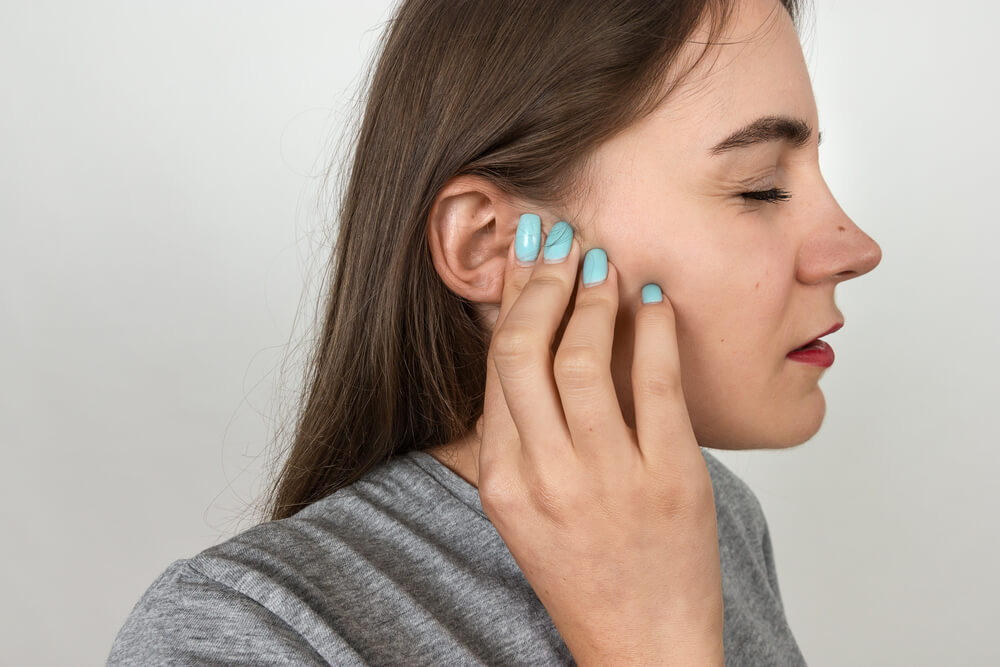Jaw and ear pain can often happen at the same time, and they can be difficult to deal with. They can make eating a chore that you’d rather avoid. Even talking to your friends and family can be a source of pain.
Typically, these types of pain are centered in the jaw joint, and the ear becomes involved because of its close proximity to the jaw. Referred pain is the term used to describe pain felt in one body part that actually originated in another body part. There are several reasons that you could be feeling discomfort in your jaw and ear, and physical therapists offer techniques that can help you deal with this discomfort and pain.
Why do I have pain in my jaw and ear?
Simultaneously feeling pain in the jaw and ear can be linked to several issues. Temporomandibular joint (TMJ) dysfunction is one such issue. The TMJ is next to the temporal bone, and the inner ear is on the other side of this bone. Jaw joint misalignment, sore jaw muscles and other issues can cause pain in the TMJ and radiate into the ear.
People can also feel pain in these areas from osteoarthritis. This type of arthritis is the most common one that affects the TMJ, and it’s caused by the wearing out of cartilage in the TMJ. In rare cases, a condition called trigeminal neuralgia could be the source of your pain. Irritation or damage of the nerves that supply the face and jaw is typically the cause of this condition.
How can physical therapists treat jaw and ear pain?
Physical therapists have several techniques they can use to treat pain in your jaw and ear. Three of the most common therapy methods used for this purpose are:
- Manual therapy — This is a hands-on technique designed to stretch soft tissue like muscles and fascia. Manual therapy can also help manipulate joints in ways that are intended to increase their flexibility.
- Therapeutic exercises — Physical therapists can design a program of jaw exercises for you. This program can help realign the jaw joint, and it can also help strengthen and relieve tension in the jaw muscles.
- Dry needling — This therapy method uses thin needles to release trigger points in the jaw muscles. Trigger points are areas of built-up tension. Most patients experience little discomfort during a dry needling session.
SSOR is ready to help you treat jaw and ear pain
You don’t have to continue living with jaw and ear soreness. Our SSOR physical therapy team can help you find effective treatment options for your pain. We offer complimentary screenings that are designed to reveal the root cause of your symptoms. Further, our team has lots of experience building individualized treatment plans for many types of pain, and our plans are intended to offer benefits like:
- Reduced pain
- Improved jaw mobility
- Increased ability to do normal daily tasks
Do you want to start getting our help for your pain? Contact us today for more information or to schedule your initial appointment.

